
Imagine you’re sitting in a lounge chair on the beach, staring out over the glittering sea, the ocean breeze ruffling your hair, listening to the slow, steady rhythm of the waves.
It’s peaceful. Perfect for thinking.
And so you do, scribbling down your thoughts with one hand and drinking a martini with the other.
You’re a freelance writer. You get paid to write for websites, magazines, corporate clients — all different types of gigs.
And it’s work you can do from anywhere.
One week, you’re on the beach. The next, perhaps you’re in the mountains. The week after that, you’re visiting family.
Sounds like a dream, right? Like it can’t possibly be real?
But it is.
In this post, I’m going to teach you how to become a freelance writer. I’m also going to talk about what’s changed with freelance writing and what it really takes to build a career in today’s world, both as a full-time writer or just doing it on the side.
Because the career is real. The freedom is real. In fact, you might even say it’s easier than ever before. Here’s why:
The $412.88 Billion Opportunity for Writers
That’s not a typo. 🙂
Have you noticed how just about every business has a website, blog, and Facebook page?
Maybe you’ve also noticed how the stuff most of them publish kinda sucks? Boring content, unprofessional spelling and grammatical mistakes, etc.
Well, that’s why successful businesses are hiring freelance writers in droves. In 2016, companies spent 195.58 billion on content marketing, and the research firm Technavio predicts spending will more than double to 412.88 billion by 2021.
It’s the new normal, but here’s what’s crazy:
While businesses are well-aware of the importance of content marketing, writers are still stuck in the Stone Age of wanting to get published in magazines and newspapers. Yes, you can still make a living that way, but with an increasing number of publishers not paying writers at all, the competition for paying gigs is getting stiffer and stiffer.
With content marketing, on the other hand, there’s actually a shortage of writers. You can make a lot more money with way fewer headaches.
Here’s how to get started:
How to Become a Freelance Writer
#1. Develop Your Content Creation Skills
Your skill at creating exceptional content will have more of an impact on how much money you make than anything else. Here’s why:
The companies paying the highest rates are the ones who understand the importance of quality content. They are happy to pay the best writers, because they believe (correctly) that it will help them dominate their competitors.
For a handy visual reminder of the ROI of content marketing, check out the image below (click to see a larger view):
Embed This Infographic On Your Site
So how do you level up your skill at creating exceptional content?
The good news is, we have dozens of posts about that very topic here at Smart Blogger. Start with this one about how to write a good blog post and work your way through.
In particular, here are some of the most important content skills for you to develop:
- Mastering content frameworks. The web is overflowing with list posts (i.e., 7 Ways to X) for a reason: they work. It’s not the only content framework, though. There are actually about a dozen proven frameworks, and the best freelance writers master as many as possible.
- Writing headlines. The headlines of your posts have a bigger impact on their traffic and overall success than any other factor. Get in the habit of brainstorming 5-10 per day. Like anything else, writing the perfect headline is mostly about practice.
- Thinking for yourself. Ever notice how most writers are just regurgitating the advice of other writers? Don’t be one of those. I’m not saying you have to be entirely original, but at least layer your own thoughts on top of the standard advice. It’ll give your writing a much greater sense of authority.
- Supporting points with examples. Instead of making a point and leaving it hanging there unsupported, get into the habit of backing up every point you make with an example. There are exceptions to this rule, but you’re far better off having too many examples than too few.
- Keeping the reader emotionally engaged. To get work as a freelance writer, it shouldn’t come as a surprise that your posts need to make logical sense, but you might not realize they also need to resonate with the emotions of the reader. The better you get at keeping readers emotionally engaged, the more shares you will get on your content, and you’ll be able to charge more.
And while those are a good start, there’s one particular skill that’s so important it deserves its own point:
#2. Up Your SEO Game
Companies and agencies are more than happy to pay a little extra for someone who understands the basics of SEO.
The more intimate your understanding of keywords, user intent, and competitive analysis, the more likely your post is to rank well in the search engines. Therefore, your writing becomes more valuable.
Because put yourself in their shoes: wouldn’t you rather pay more for someone with a proven ability to rank? I certainly would, and so it makes sense to become that person.
The strongest portfolio you can have is a collection of posts ranking on page 1 of Google. Sarah Peterson, for example, now makes over $1,000 per post, because she has a proven track record of ranking well.
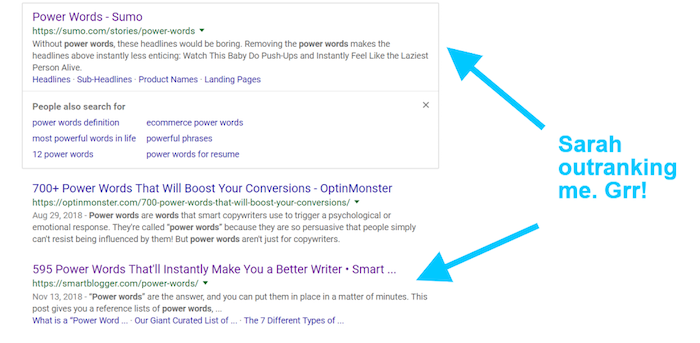
Granted, it takes time to build that kind of portfolio. Let’s walk through the process, starting with what you do when you’re a total beginner.
#3. Build a Portfolio of Sample Posts
You’d think it would be really hard to become a freelance writer without an extensive portfolio, right? After all, it’s proof for clients that you know what you’re doing.
But here’s the thing:
There are different levels of proof, starting with…
Level 1: A Portfolio That Proves You Know How to Write a Decent Post
You’d be surprised how many so-called “freelance writers” don’t understand how to write a proper blog post. I’d say it’s more than 80%, which sounds horrible, but it’s also a huge advantage if you do know how to write a good post.
Let’s say you’ve been working on your content skills (the first step above *cough*), and you’re getting comfortable writing different types of blog posts. Well, write a few sample posts to show off your skills.
If you have your own website, put them there. If not, it’s quick and easy to publish them on other blogging platforms like Medium.
The best part is, you can do this in a matter of a week or two. Two or three posts is enough, and you don’t need anyone’s approval to publish them. If you don’t have a portfolio yet, it’s absolutely where you should start.
Level 2: A Portfolio That Proves You Know What You’re Talking about
Next, you want to build your credibility as a subject matter expert.
And I’m not just talking about demonstrating your expertise. This phase is also about showing you can get published on top publications.
Think about it… if you see someone writing on one of the top sites in your space, don’t you immediately assume they are an expert?
Well, that’s the kind of credibility you need. It’s also far easier to do than you might assume.
Because most big sites have stopped paying for content, they’re always looking for good writers. In our guest blogging program, we’ve helped hundreds of new writers get published on sites like Forbes, Huffington Post, Scary Mommy, Lifehack, and dozens of others. I won’t say it’s easy, because it’s not, but it’s far easier than most people think. Here’s a guest post by Laura Tong published at Huffington Post:
I’m generalizing here, but for the most part, it’s about the pitch. If the editor likes your idea, and you follow up with a well-written piece, you can get published almost anywhere.
And that immediately helps make you a hot commodity as a freelance writer.
Level 3: A Portfolio Showing Documented Results for Clients
Finally, you want to prove you can get results for clients.
One way is to track shares and search engine rankings for the posts you write, like we discussed above for Sarah Peterson, but an even better way is to create case studies. Here’s an example from Ross Hudgens of Siege Media:
He shows screenshots of increasing client traffic by 250,000 visits per month for three different clients. Nothing is more compelling than that. Granted, it’s super hard to do, but that’s what makes it so valuable.
Your long-term goal should be to develop that kind of proof for yourself. It might take you years, and that’s fine, because when you get there, it can literally make you one of the highest paid writers and consultants in the world.
#4. Get Your First Paying Client
So, we’ve talked a lot about the skill and credibility aspects of becoming a freelance writer. What about getting clients? That’s the hard part, right?
In the beginning, yes. Eventually, top freelance writers end up getting more work than they can handle, mostly by referral, but getting those first few paying clients can be a real slog.
Here are some insider tips for getting started:
- Keep an eye on agency job postings. One of the best potential clients is agencies, because they usually have an ongoing need for writers. Instead of only getting paid once, you can develop a relationship with a few and get new gigs for months or even years into the future. Here’s a big list of content marketing agencies.
There are two main ways of getting work from them. You can reach out to them and ask if they have any freelance work — a gutsy but effective approach — or you can keep an eye on their “careers” page. - Pitch software company blogs. This might seem odd, but stick with me here for a moment. You want to work with businesses who have money to spend on marketing. Chances are, those companies are subscribed to various apps for email marketing, analytics, and so on. Most software companies in the marketing space (like Hubspot, Sumo, Ahrefs, etc.) also publish a great deal of content.
So, who better to write for? You’re instantly getting in front of thousands of the right clients. Many of these blogs will also pay you to write for them, so in many cases you can get your first client while also prospecting for clients. What could be better than that?
- Link to your services in your byline. Let’s say you’re in “Phase 2” of the portfolio building process we walked through above, and you are writing some guest posts for top blogs in your space. You can mention it in your byline to attract clients. Here’s an example from Sophia Dagnon over at Copyhackers:
Before we move on, there’s one thing you SHOULDN’T do…
Compete against bottom dollar freelancers on sites like Upwork.
Yes, there’s always work available on sites like those, but generally speaking, it’s clueless, frustrating clients who will nickel and dime you over everything and never refer you other work. It’s better than nothing, I suppose, but I believe you’re far better off pursuing some of the options I mentioned above. Not only will you get paid more, but you’ll be treated better too, and it will be much easier to grow your client base.
#5. Scale until You No Longer Want to
In the beginning, you’ll probably be thrilled just to get a client paying you to write a few articles on the side, but I think it’s useful to step back and think about how freelance writing fits into an overall career.
Here’s the career path for most freelance writers:
Phase 1: A Nice Side Income
Most people start writing just a few articles on the side, and I think that’s smart. You can learn the craft, build your connections, and make a few bucks on the side. Most likely, about $20-$25 per hour.
Is it going to make you rich? No, but it’s certainly not a bad side gig. A lot of part-timers clear $500-$1,000 per month from their writing.
Eventually, if you’re good, you’ll also start getting more work than you can handle in your spare time, and that’s when you can ponder moving on to the next phase.
Phase 2: A Full-Time Job or Business
When should you consider quitting your day job?
The easiest answer: whenever you feel confident your freelance writing could replace your salary. You can either…
- Go to work as a full-time content marketer. The number of job openings for full-time content marketers is exploding. Here’s a graph of the job growth just from 2017 to 2018:
- Start your own content marketing agency. Once you’ve picked up a few clients, you can begin hiring people to work under you and grow your own miniature agency.
Both options have big upsides. You can have a long, solid career as a content marketer working companies who truly appreciate it, and building an agency could potentially make you a millionaire.
At some point though, I’ve found that even the most successful writers usually end up moving on to…
Phase 3: Starting Your Own Site
In the past, you’ve probably thought of starting your own site as the first step, not the last, and it’s true — there’s nothing stopping you from starting your site right now.
But think about it for a moment…
Would you rather start your own site right now, spend a couple of years learning everything from scratch, and then slowly but surely begin to make money from it, or could it actually be a better option to go to work for someone else for a while, get paid while you learn, and then start your own site with several years of experience under your belt?
Over the years, I’ve noticed an increasing percentage of our students choosing the second option, and I think it makes sense. Yes, you can absolutely start your own site right now, and yes, you can be successful — we are the market leaders in helping people do exactly that — but it’s a tough road. You have to persistently put in the effort for years before it begins to pay off.
If you become a freelance writer and start working for other businesses, on the other hand, the payoff is fast. Probably a month or two to learn the basics and then another month or two to get your first client. While it might take you longer overall to build your own publishing powerhouse, it’s easier to stay persistent when money is coming in each and every time you publish an article.
The bottom line:
You Can Make Good Money As a Writer
It’s tragic how many writers think go into another career because they believe no one can make a living from it. It’s just not true.
Yes, it’s tough to make a living as an author. Yes, it’s difficult to scrape by writing for magazines and newspapers. Yes, there are plenty of would-be poets and novelists living under bridges.
But those are only a few types of writing.
If you want to make money as a writer, go where the money is. That’s what I did. I started out writing for other sites, took a full-time job at Copyblogger, and then branched off on my own — exactly the career path I described above.
The results?
About $5.3 million so far. In this case study, I described exactly how I did it.
Oh, and did I mention I did it all from a wheelchair without being able to move from the neck down?
Yeah…
So please, don’t tell me you can’t make money as a freelance writer. You absolutely can.
You just have to be smart about it.
The post How to Become a Freelance Writer and Get Paid $200 – $1K per Post appeared first on Smart Blogger.
from Smart Blogger https://ift.tt/2rasoDJ


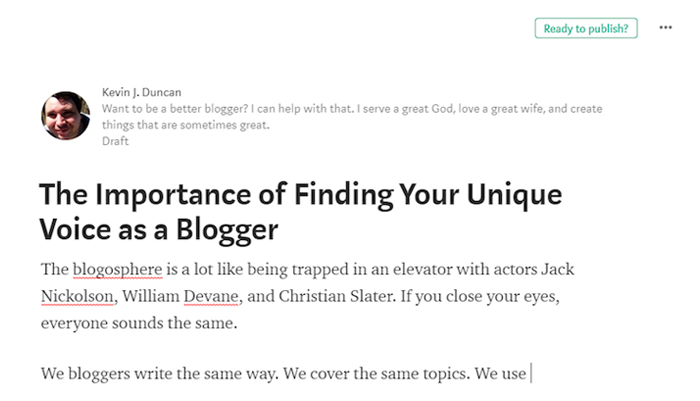

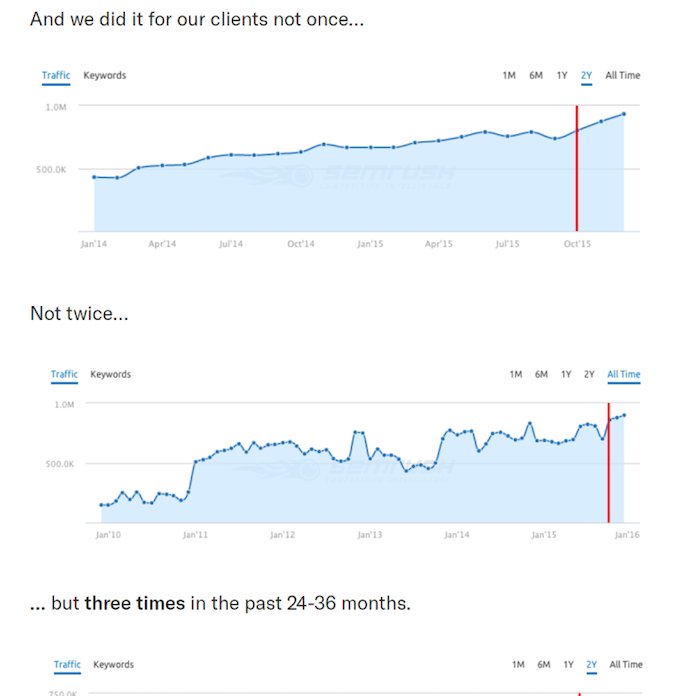
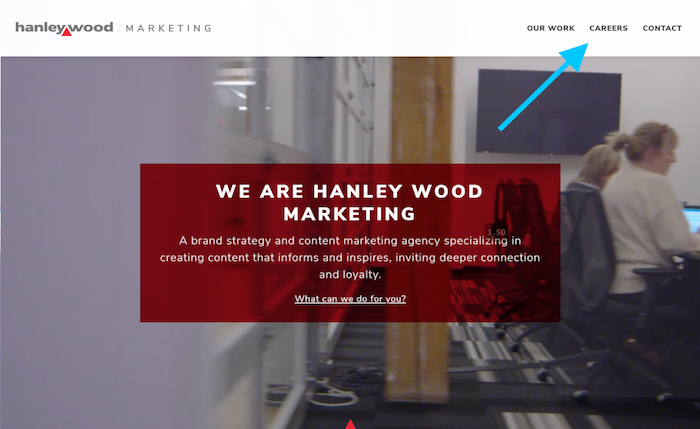
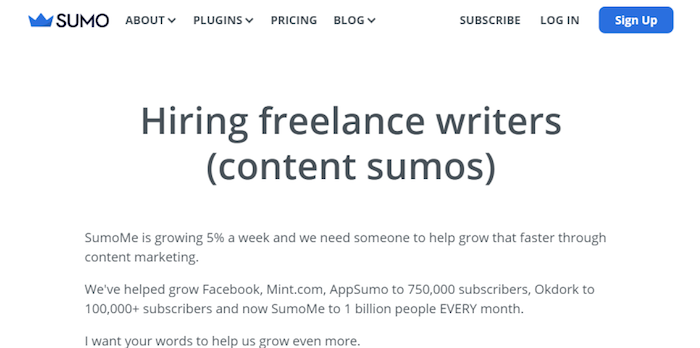




No comments:
Post a Comment